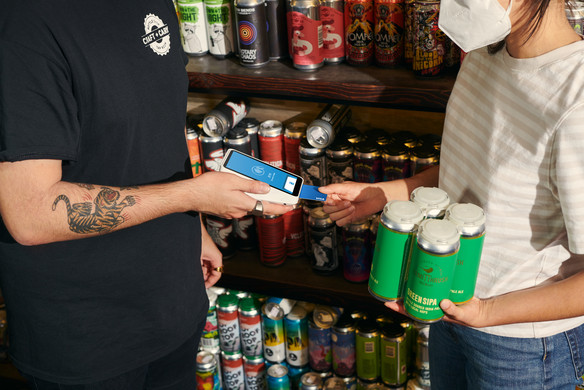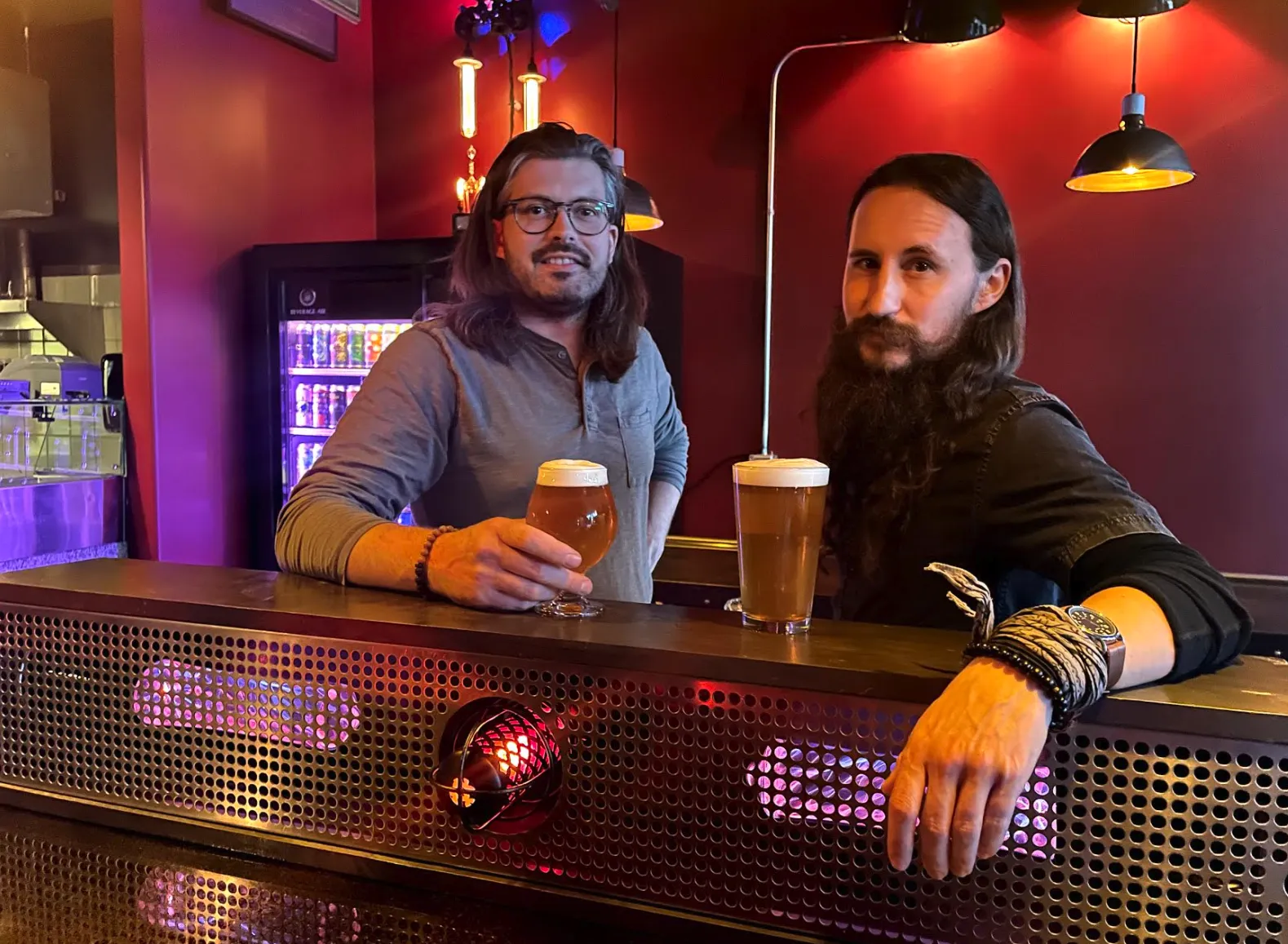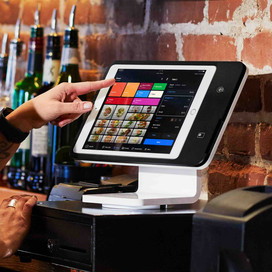Table of contents
Across the country, many state liquor authorities permitted bars, restaurants, and distilleries to sell their alcohol products off premises — making alcohol delivery available to customers in an unprecedented way.
Guidelines vary drastically from state to state. Alcohol delivery is still not available in all states, and some states are continuing to work out what regulation changes will be permanent. But where it is legal, it’s clear that customers love the convenience of alcohol delivery and business owners are benefiting.
Alcohol delivery is at the nexus of two big trends: on-demand delivery and eCommerce. Square’s 2024 Future of Restaurants report found that 82% of restaurants offer food delivery through the restaurant or a third-party service, and 38% plan to offer more options for online ordering to stay competitive in 2024. Meanwhile, consumers say that 37% of their monthly purchases are now done online.
The International Wine and Spirits Record, an industry research firm, reports that in the U.S., 44% of consumers only started buying alcohol online in 2020, compared to 19% in 2019. There is still a lot of opportunity, as the organization predicts that the alcohol eCommerce market will still increase by 42% this year to reach $24 billion.
All of this has contributed to making on-demand alcohol delivery, whether directly through businesses’ sites or through a third-party app — a new consumer habit. And that’s been a boon for businesses, even as people get vaccinated and on-premise consumption restrictions lift.
“I think at first the delivery portion of our business was near 40%,” says Alvin Haruthunian, operations manager for Hi—Lo Liquor Market in Los Angeles and Long Beach, California, noting that demand for delivery has gone down slightly but is “still going strong”
Craft beer bar and pizza shop A.W. Wander, based in Manlius, New York, recently started testing out alcohol delivery and has already seen success.
“To add the alcohol delivery, that’s important for us because the craft beer aspect of it is really our business — the pizzas supplement the craft beer,” said co-owner Dan Chapman. “So for us to be able to sell our core product, to have it delivered, that’s huge for us, especially rolling out of COVID times.”
Dan Chapman and Joe Ori are the owners of craft beer bar A.W. Wander.
Benefits of alcohol delivery
For restaurants, which on average see 20 to 25% or more of their revenue come from alcohol sales, including alcohol in their delivery offerings can have a major impact on the bottom line as consumers add drinks on to their orders.
“It’s adding revenue to each sale,” Chapman says. “We’re selling beers that are anywhere from $8 to $11 a can. So even if somebody was to order a couple beers on top of a pizza or two, we could be selling just as much, if not more, alcohol than we are food products.”
Walter Manzke, chef and owner of Los Angeles restaurants Republique and Petty Cash Taqueria, said ticket sizes for both restaurants increased once they offered alcohol for off-premise consumption.
“Pretty much everybody that gets a to-go order from Petty Cash for food, they’re getting a cocktail with it, which is something that we didn’t have before. So there is a definite increase based on that,” he said.
For bars and bottle shops, delivery offers another way to reach more customers in a convenient way and capture sales that might otherwise go to big-box stores or grocers.
Will alcohol on-demand delivery be relevant post-pandemic?
“A majority of my customers are going to be very happy to come back and sit down at the bar and be in an in-person situation,” Chapman posits. “But I think there’s always going to be a residual amount of people that have gotten used to laying low, and they actually like the idea of staying home and ordering in and the convenience of it.”
Haruthunian agrees.
“It’s like caged animals that are waiting to get out and finally do, you know, but I think it’ll normalize somewhere in between. I don’t think deliveries will disappear. I don’t think they’ll stay as strong as they had been during stay-at-home. [But] it’s definitely going to be a good and viable part of our business going forward.”
Post-pandemic, there are still plenty of use cases for alcohol delivery and ways you can market your offerings.
Entertaining at home
People will go back to entertaining at home, taking advantage of the home and backyard improvements they made during COVID. There will be family reunions again, group stays at AirBnBs, and any excuse to get together with friends. Alcohol delivery makes it easy for them to serve their favorite drinks without a separate shopping trip.
While Republique wound down it’s off-premise alcohol program (they’ll still provide cocktails and other drinks to go upon request), Manzke and beverage director Shawn Lickliter learned that people loved being able to serve expertly crafted dinner and drinks at home. Petty Cash still offers margaritas, wine, and beer for off premise, and sees continued demand.
“[Most people] really can’t reproduce cocktails in the same way as a professional at home. And you know, who would want to? I mean, it’s so convenient to be able to get an old fashioned or a margarita and have some friends over and be able to serve it at that level.”
Gifting
Alcohol delivery can help customers celebrate the birthdays, anniversaries, and other milestones of friends and family who are long distance, particularly if you have interesting or unique offerings or gift packages.
“I couldn’t break down a percent, but I’m just guessing, let’s say it’s 20% of the orders that we get for delivery online are gift orders. So like, ‘Hey, Susie is stuck at home, or such and such has a birthday, or this person had a rough day, let’s send some alcohol and some snacks,’” Haruthunian explains. “Then that person gets the gift box that we’ve assembled and we’ve made it look kind of nice with a little handwritten card that goes with it.”
Haruthunian says that turns into free advertising for Hi—Lo Liquor Market, as the recipient will often post pictures of the gift box and tag the sender and business on Instagram.
Instant gratification
Give customers the option of buying unique beers or bottles that they can’t get elsewhere as soon as they come across it. For example, if you’re a brewery or bottle shop that sends out a newsletter with your newest arrivals, enabling delivery on those items allows customers to purchase and enjoy them immediately.
Even Manzke has seen the power of instant gratification when it comes to cocktails. “I constantly get people asking like, hey, I just saw this cocktail on Instagram, can I get it delivered?”
At-home meal experiences
Customers fell in love with prix fixe restaurant delivery meals during the pandemic, as it was a convenient way for them to have a special meal at home. Post-pandemic, as customers go back to having commutes or continue working long hours, there’s still an opportunity to promote and package these experiences, complete with a bottle of wine or cocktails.
Delivery is just one more way to engage with customers, making it easy for them to order in the way that works best for them. You can then turn them into repeat customers through loyalty rewards that they can enjoy whether they shop online or on premise.
Read more: Learn How Bottle Shop Craft + Carry Grew Its Successful Loyalty Program
How to offer alcohol delivery
First, make sure you understand your state and local laws around off-premise alcohol. Some states will allow delivery of beer and wine, but not spirits, for example. Other states will allow for shipping, but not local delivery. Some of the relaxed restrictions from 2020 are temporary, so check with your local and state alcohol boards to get the most up-to-date information.
Next, decide whether you want to use a marketplace for delivery or allow delivery directly from your site.
Using Square On-Demand Delivery, your customers can order directly from your site and third-party drivers will automatically be dispatched to deliver their order — commission free. Couriers are trained to verify age upon delivery. Square On-Demand Delivery for alcohol is currently available in 16 states.
Learn more: How to Offer Alcohol Delivery
Finally, think about how you can package your delivery to increase order size and make the unboxing experience special. For example:
- Packaging ingredients together for a gift box
- Creating cocktail kits
- Doing themed variety packs (similar to a wine or beer subscription)
- Adding in extra samplers (if allowed in your state)
Hi—Lo Liquor Market includes branded cocktail cards with suggestions for other products to order and recipes for how to use them. Dutch Kills Bar in New York City includes a QR code for a Spotify playlist of their jukebox’s most popular hits with cocktail deliveries, so customers can recreate the vibe at home.
While no one knows exactly what the future holds, alcohol delivery seems poised for growth.
“On top of the revenue per ticket and then convenience, too, it’s also just having a little bit more of a backup plan for the future,” says Chapman, adding that the whole industry is on edge after 2020.
“It’s kind of Pandora’s box a little bit,” Manzke says. “Because customers will keep asking for it and it’s only going to become more popular.”
![]()













